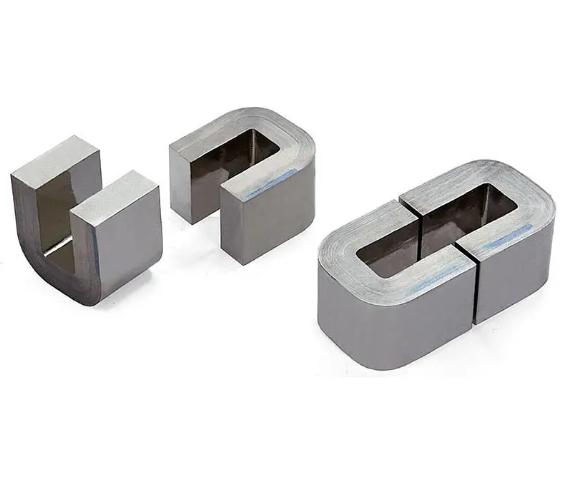The term “amorphous core” has received a lot of attention in the field of electrical engineering and materials science, especially in the field of transformers and inductors. As the demand for energy-saving devices continues to grow, it is becoming increasingly important to understand the characteristics and applications of amorphous cores. This article delves into the concept, characteristics, advantages, and applications of amorphous cores and provides a comprehensive overview of this innovative material.

Understanding Amorphous Materials
Before we delve into the specific details of amorphous magnetic cores, it is necessary to first understand what amorphous materials are. Unlike crystalline materials, which have a well-defined and ordered atomic structure, amorphous materials lack long-range order. This disordered arrangement of atoms gives it unique physical properties that make it advantageous in a variety of applications.
Amorphous materials come in a variety of forms, including glass, gels and certain polymers. In the field of magnetic materials, amorphous alloys are of particular interest. These alloys are typically made of iron, silicon and other elements and are produced through a rapid cooling process that prevents the formation of a crystalline structure.
What is an Amorphous Core?
Amorphous cores are cores made of non-crystalline metal alloys. These cores are mainly used in electrical devices such as transformers, inductors, and magnetic sensors. The unique properties of amorphous materials, especially their low energy loss and high magnetic permeability, make them ideal for these applications.
The manufacturing process of amorphous magnetic cores involves the rapid solidification of molten metal, resulting in an amorphous structure. This process can be achieved through techniques such as melt spinning or planar flow casting. The resulting material combines high resistivity with low hysteresis losses, which is essential for efficient energy transmission in electrical devices.
Advantages of Amorphous Cores
1. Reduce Energy Loss: One of the most significant advantages of amorphous cores is their ability to minimize energy losses during operation. Conventional silicon steel cores produce hysteresis and eddy current losses, which lead to inefficiencies in transformers and inductors. In contrast, amorphous cores have lower hysteresis losses due to their disordered atomic structure, thereby improving energy efficiency.
2. High Magnetic Permeability: Amorphous cores have high magnetic permeability, which enables them to effectively guide magnetic fields. This property is critical to the efficient operation of transformers and inductors because it enables devices to operate at lower energy levels while maintaining performance.
3. Compact Design: The efficient design of amorphous cores makes it possible to design smaller and lighter electrical devices. This compactness is particularly advantageous in applications with limited space, such as electric vehicles and portable electronic devices.
4. Environmental benefits: Using amorphous cores helps promote environmental sustainability. By improving the energy efficiency of electrical equipment, these cores help reduce overall energy consumption, thereby reducing greenhouse gas emissions. In addition, the materials used in amorphous cores can often be recycled, further reducing their impact on the environment.
5. Wide Frequency Range: Amorphous cores can operate effectively over a wide frequency range, making them suitable for a variety of applications, including high-frequency transformers and inductors. This versatility enables engineers to design devices to meet specific performance requirements.
Application of Amorphous Core
The unique properties of amorphous cores have led to their adoption in a variety of applications across different industries:
1. Transformer: Amorphous cores are increasingly used in power transformers, especially in power distribution and generation applications. Their low energy loss helps improve efficiency, which is critical to reducing operating costs and enhancing the reliability of power systems.
2. Inductors: In electronic circuits, inductors play a vital role in energy storage and filtering. Inductors use amorphous cores to minimize losses and improve performance, especially in high-frequency applications.
3. Magnetic Sensor: The high sensitivity and low noise characteristics of amorphous cores make them ideal for magnetic sensors. These sensors are widely used in various fields such as automotive systems, industrial automation and consumer electronics.
4. Electric Vehicles: As the automotive industry transitions to electric vehicles (EVs), the need for efficient power management systems is growing. Amorphous cores are used in EV chargers and on-board power electronics to improve efficiency and reduce weight.
5. Renewable energy systems: In renewable energy applications such as wind and solar power, amorphous cores are used in inverters and transformers to improve energy conversion efficiency. This is critical to maximizing the output of renewable energy systems.
In conclusion
All in all, amorphous cores represent a major advancement in the field of magnetic materials, offering numerous advantages over traditional crystalline materials. Their unique properties, including lower energy losses, high magnetic permeability, and compact design, make them ideal for a wide range of applications, from transformers to electric vehicles. As the demand for energy-efficient technologies continues to grow, the role of amorphous cores in modern electrical devices is likely to expand further, paving the way for a more sustainable and efficient future. Understanding the basics of amorphous cores is essential for engineers and researchers seeking to innovate in the fields of electrical engineering and materials science.
Post time: Apr-22-2025

